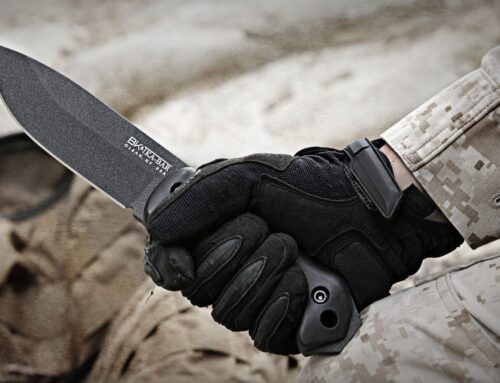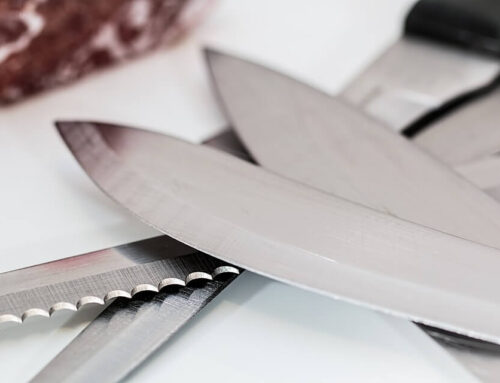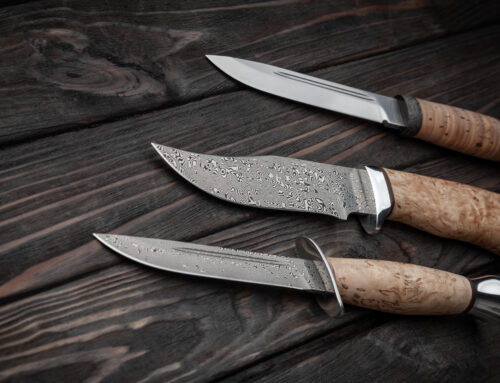There are many beautiful knives on the market today. Having a good looking knife is half the battle. The big struggle is keeping your blade sharp. I’ve seen many custom and handmade knives that seemed great until I felt the edge and realized they hadn’t been cared for sufficiently to be able to stand up to the test when it really mattered. I suppose it depends on what you’re looking for. If you’re looking for a nice decorative piece, then a dull blade may work for you. But for those of us knife enthusiasts looking for something sharper, it’s very helpful to know how to properly put an edge on a knife and how to keep it that way.
For someone that is new to sharpening knives, this could seem like a daunting task. Luckily there are many that have gone before you and laid out a great plan for where to begin.
Sharpening Using a Honing Steel
To use a honing steel, sometimes known as a sharpening steel, start with the blade at the top and move the knife down the steel, while maintaining a 20° angle. As the blade slides down the rod you are going to pull the blade towards you so that the entire length of the edge comes into contact with the steel before it goes below. Alternate swiping down on the left and right side, being extra careful to maintain the same angle on each side. If the angle is too steep on either side the blade can “fold” over, and will lose its sharpness rather quickly.
Sharpening Knives with a Sharpening Stone
These stones are sometimes referred to as “whetstones,” because the term “whet” actually just means to sharpen a knife or blade. There are artificial stones and natural stones, and various degrees of “grit,” which refers to the coarseness or fineness of the stone.
The Coarse Stone
When first beginning to sharpen your custom knife, be sure to look to see if there is a nice edge on the blade. The edge will be the shiny part, the angle on each side that has been worn down. If there is no good edge, you will need to use a coarse stone to place an edge on the knife, again at about a 20° angle. You don’t want to “cut” the stone when running the blade across it. Instead, pulling diagonally at an angel so that the blade is pulled across rather than cut across the surface of the stone. Repeat this 3-5 times on one side, and then the same amount of times on the other side, maintaining the same angle on each side of the blade.
The Fine Side
Once you have a proper edge, you will want to use a finer stone so that you can polish off the angle and smooth out any ridges that may have appeared on the sides of the blade. This part of the process helps the blade stay sharp longer because the angle will become more uniform and consistent. Use the same sharpening method for the fine stone as you did for the coarse one.
Keeping the blade sharp is one of the more challenging, but also more rewarding parts of being a custom knife enthusiast. The only thing that can make a beautiful knife better is keeping it in prime condition. A couple ways to tell if your knife is sharp is to see if it cuts paper or magazine paper with slight pressure, without skipping or tearing the page. Another method (be careful with this one) is to test it on your arm and see if it shaves hair easily. If it does that, then your blade is sharp.
We hope this has been helpful for you. If you have more questions, see our previous blog posts or give us a call at 760-945-7177, and if you would like to see our selection of custom knives, you can see our gallery here! Thanks for reading!
April 1, 2016






